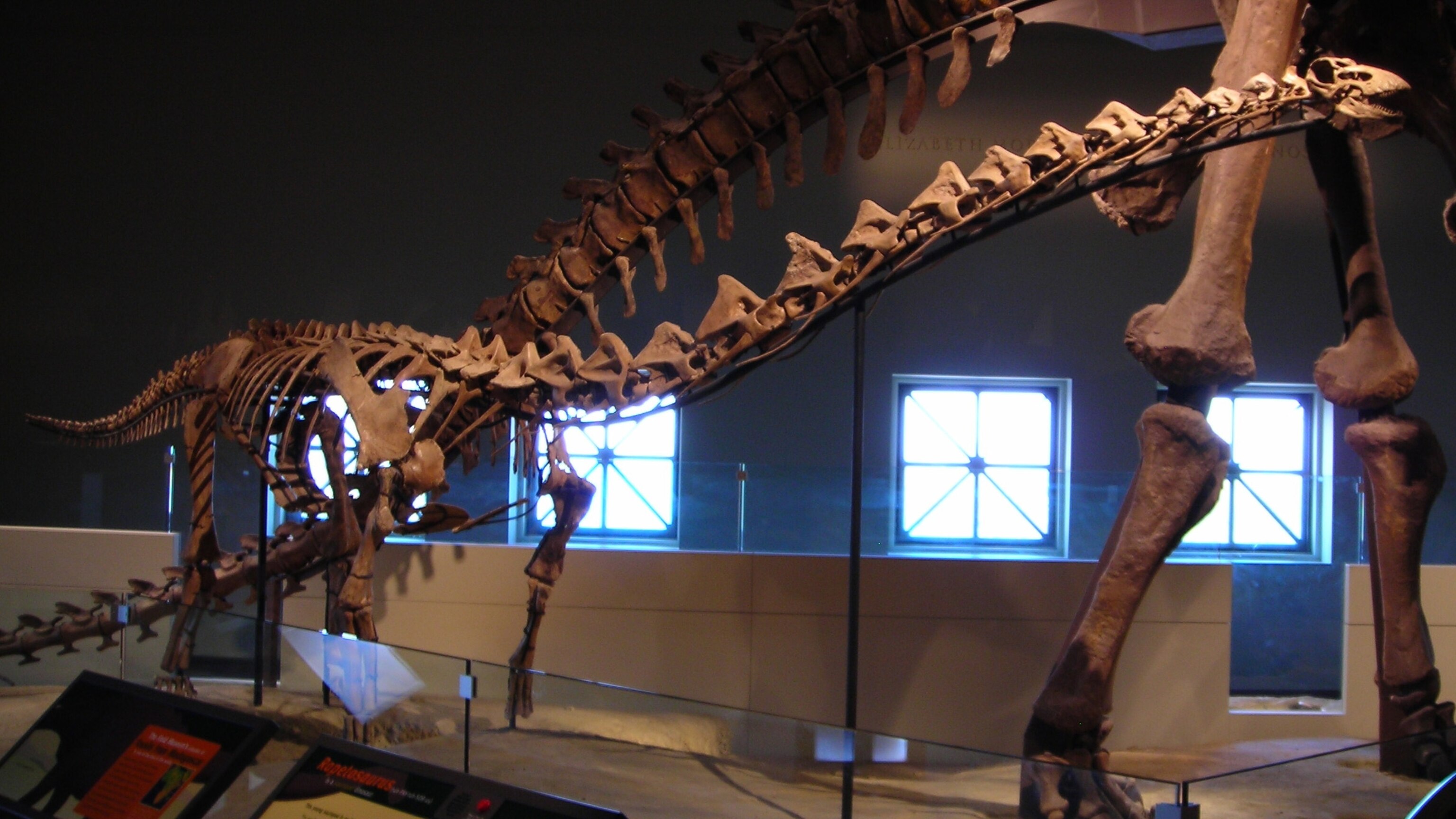One sauropod deserves another. After briefly profiling the as-yet-little-known Qiaowanlong last week, it’s only natural to follow up with Rapetosaurus krausei – another recently-named Mesozoic herbivore that altered our understanding of the forms some sauropod lineages took.
Paleontologists Kristina Curry Rogers and Catherine Forster named Rapetosaurus in 2001. As the researchers dubbed the dinosaur in the paper’s title, the sauropod was among “the last of the dinosaur titans.” At somewhere between 66 and 70 million years old, Rapetosaurus roamed Madagascar during what we can look back at and call the waning days of the Cretaceous. And the record of this dinosaur is particularly rich among its kind – scattered remains of multiple individuals, including articulated specimens, have been found within a ten square kilometers of Madagascar’s Cretaceous exposures.
Among the various sauropod lineages, Curry Rogers and Forster concluded, Rapetosaurus belonged to the titanosaur branch. This widespread group of long-necked leaf-munchers included some of the largest dinosaurs of all time, including the 100 foot plus Argentinosaurus, although adult Rapetosaurus stretched a more modest 50 feet or so. And unlike other titanosaurs, Rapetosaurus had a peculiar skull that superficially resembled those of diplodocid dinosaurs such as Apatosaurus and Diplodocus itself.
In a 2004 follow-up focused on the head of Rapetosaurus, Curry Rogers and Forster drew from two partial skulls to fill out the dinosaur’s anatomy and compare the sauropod to other titanosaurs. While closely-related dinosaur had relatively deep, stocky skulls, Rapetosaurus had a longer, more slender cranium with the nasal opening up between the eyes. Not all titanosaurs followed the same anatomical rules. Given the number of titanosaurs paleontologists have named, and how few skulls have been found, there may have been even more skeletal diversity than we presently understand. Despite being some of the largest and most impressive dinosaurs, titanosaurs are still prehistoric enigmas.
Previous entries in the Dinosaur Alphabet series:
Q is for Qiaowanlong
P is for Pelecanimimus
O is for Ojoceratops
N is for Nqwebasaurus
M is for Montanoceratops
L is for Leaellynasaura
K is for Kileskus
J is for Juravenator
A-I at Dinosaur Tracking.
References:
Curry Rogers, K., Forster, C. 2001. The last of the dinosaur titans: a new sauropod from Madagascar. Nature. 412: 530-534
Curry Rogers, K., Forster, C. 2004. The skull of Rapetosaurus krausei (Sauropoda: Titanosauria) form the Late Cretaceous of MadagascarThe skull of Rapetosaurus krausei (Sauropoda: Titanosauria) form the Late Cretaceous of MadagascarThe skull of Rapetosaurus krausei (Sauropoda: Titanosauria) form the Late Cretaceous of Madagascar. Journal of Vertebrate Paleontology. 24, 1: 121-144
Curry Rogers, K. 2009. The postcranial osteology of Rapetosaurus krausei (Sauropoda: Titanosauria) from the Late Cretaceous of Madagascar. Journal of Vertebrate Paleontology. 29, 4: 1046-1086
Related Topics
Go Further
Animals
- How can we protect grizzlies from their biggest threat—trains?How can we protect grizzlies from their biggest threat—trains?
- This ‘saber-toothed’ salmon wasn’t quite what we thoughtThis ‘saber-toothed’ salmon wasn’t quite what we thought
- Why this rhino-zebra friendship makes perfect senseWhy this rhino-zebra friendship makes perfect sense
- When did bioluminescence evolve? It’s older than we thought.When did bioluminescence evolve? It’s older than we thought.
- Soy, skim … spider. Are any of these technically milk?Soy, skim … spider. Are any of these technically milk?
Environment
- Are the Great Lakes the key to solving America’s emissions conundrum?Are the Great Lakes the key to solving America’s emissions conundrum?
- The world’s historic sites face climate change. Can Petra lead the way?The world’s historic sites face climate change. Can Petra lead the way?
- This pristine piece of the Amazon shows nature’s resilienceThis pristine piece of the Amazon shows nature’s resilience
- Listen to 30 years of climate change transformed into haunting musicListen to 30 years of climate change transformed into haunting music
History & Culture
- Meet the original members of the tortured poets departmentMeet the original members of the tortured poets department
- Séances at the White House? Why these first ladies turned to the occultSéances at the White House? Why these first ladies turned to the occult
- Gambling is everywhere now. When is that a problem?Gambling is everywhere now. When is that a problem?
- Beauty is pain—at least it was in 17th-century SpainBeauty is pain—at least it was in 17th-century Spain
Science
- Here's how astronomers found one of the rarest phenomenons in spaceHere's how astronomers found one of the rarest phenomenons in space
- Not an extrovert or introvert? There’s a word for that.Not an extrovert or introvert? There’s a word for that.
- NASA has a plan to clean up space junk—but is going green enough?NASA has a plan to clean up space junk—but is going green enough?
- Soy, skim … spider. Are any of these technically milk?Soy, skim … spider. Are any of these technically milk?
Travel
- Could Mexico's Chepe Express be the ultimate slow rail adventure?Could Mexico's Chepe Express be the ultimate slow rail adventure?
- What it's like to hike the Camino del Mayab in MexicoWhat it's like to hike the Camino del Mayab in Mexico
